Join us as we visit some standout Albuquerque GSI/LID projects. We’ll provide the transportation and a delicious lunch! You can purchase Field Trip tickets here – it’s not necessary to attend the 2-day conference to purchase these tickets.
You will meet the bus in the North Parking lot of Indian Pueblo Cultural Center on Wednesday, March 6 at 7:30 a.m. (see map for details). Bus leaves promptly at 8:00 a.m., and returns by 5 p.m.
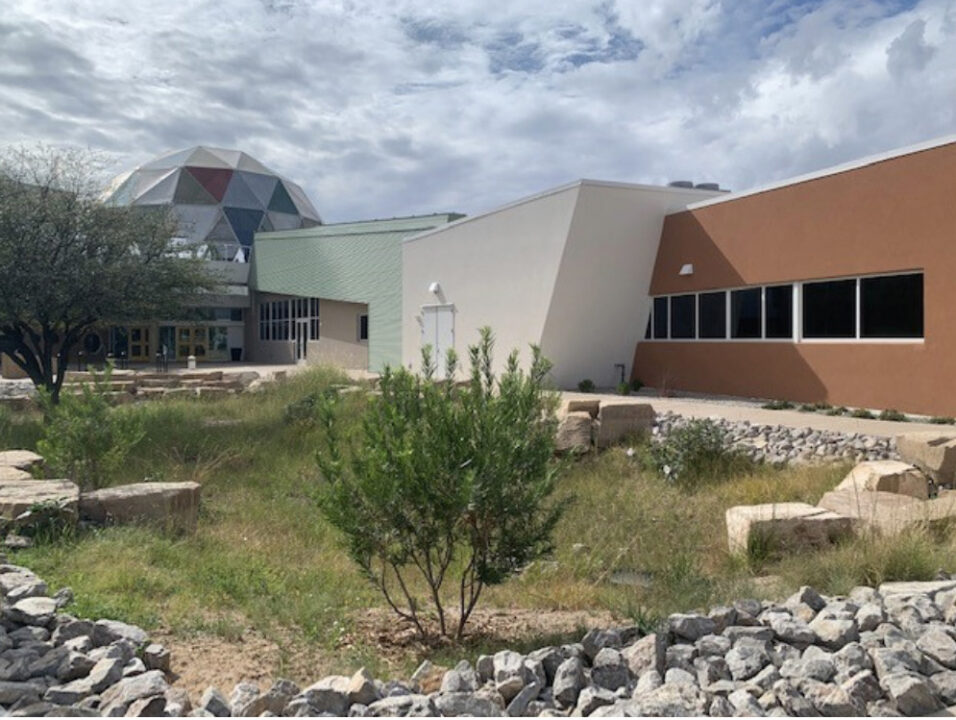
EXPLORA PONDS • GEORGE RADNOVICH, SSW; GEORGE MORAN, EXPLORA
The Explora and the Explora X Studio were both designed by Sites Southwest and encompass four distinct projects commissioned over a 15 year timespan. Because the mission of Explora is learning, museum staff and the landscape architects wanted to engage visitors from the moment that they arrived at the interactive museum. For that reason the landscape and its water collection systems became a very literal part of the experience and every building roof and hard surface on the site drains into the landscape. Like the main portion of the museum, the newly constructed Explora X Studio utilizes precipitation for its landscapes, particularly in the ponding areas. Two interconnected ponds capture precipitation and utilize it for Blue Grama Grass meadows, one of which is an outdoor classroom with a tidy arrangement of boulders grouped around the pond which doubles as seating.
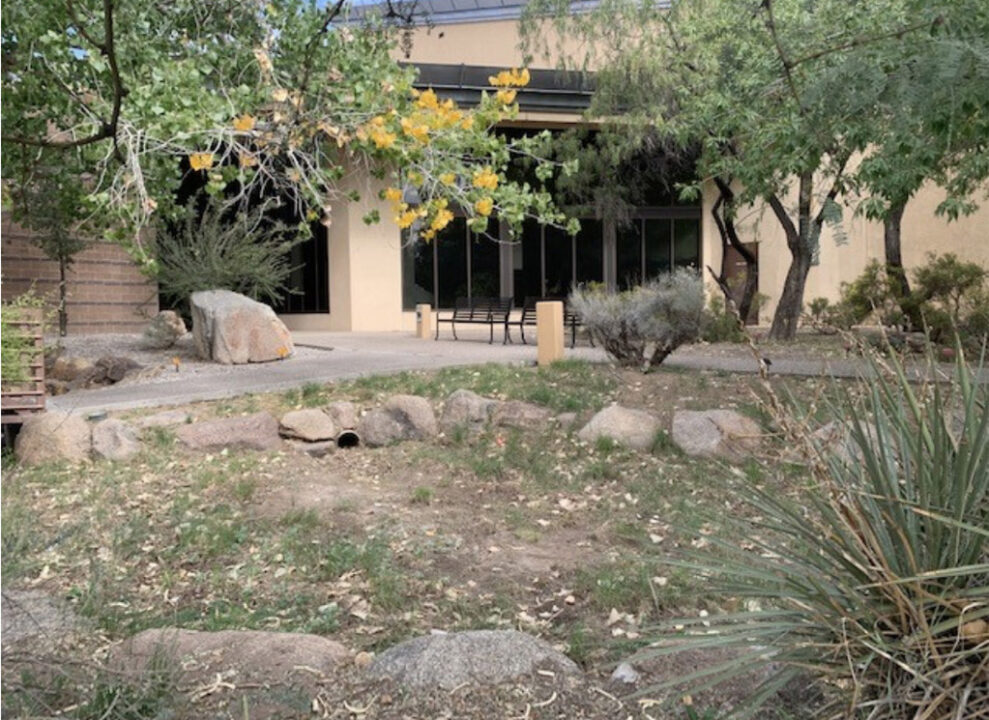
NEW MEXICO MUSEUM OF NATURAL HISTORY • GEORGE RADNOVICH, SSW; BRIAN GRACE, NATURAL HISTORY MUSEUM
The New Mexico Museum of Natural History is a learning landscape that uses habitat and vegetation to illustrate the state’s natural history. This landscape was developed as a series of environments that represent the geologic diversity and ecozones found in the State of New Mexico. The design mimics the way that water flows in arroyos and ponds in high desert habitats, demonstrating how nature-based solutions can effectively manage stormwater in landscape architecture. Notable for its maturity, this landscape was installed in the late 1990s and showcases the resilience of GSI with minimal maintenance input.
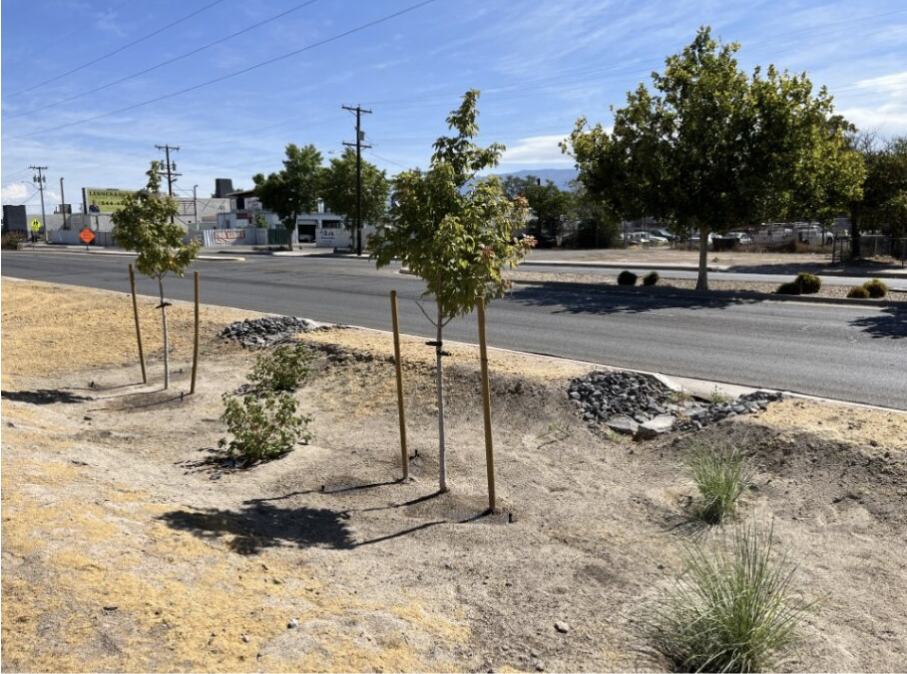
ALAMEDA DRAIN TRAIL PHASE I – 4TH ST TO MONTANO • BRIAN GRIFFITH, DPS; ZACH TRONCOSO, PARAMETRIX; WHITNEY PHELAN, CITY OF ALBUQUERQUE; KENNETH ORTIZ , CITY OF ALBUQUERQUE; RHETT SANDERS-SPENCER, MRGCD; PJ CHAVEZ, AMAFCA
The Alameda Drain Trail transforms a previously neglected nine-mile drain in the Middle Rio Grande Valley into a valuable regional transportation and recreation asset. A collaborative effort involving four public agencies, this project integrates green stormwater infrastructure into a multi-use drainage and trail facility. This project is a celebration of water, incorporating bioretention swales to vegetate a once-barren parcel. Key benefits of the project include pollutant treatment, increased stormwater infiltration, expanded tree cover, mitigated heat island effect, habitat creation, and the provision of both passive and active recreational amenities. The project introduces novel Best Management Practices (BMPs), such as large-scale bio-retention swales that accept runoff from curb cuts along 2nd Street. Seeding operations are strategically executed to outcompete weeds by overseeding native grasses. This project offers many lessons for successfully realizing the vision of GSI projects, from design through construction.
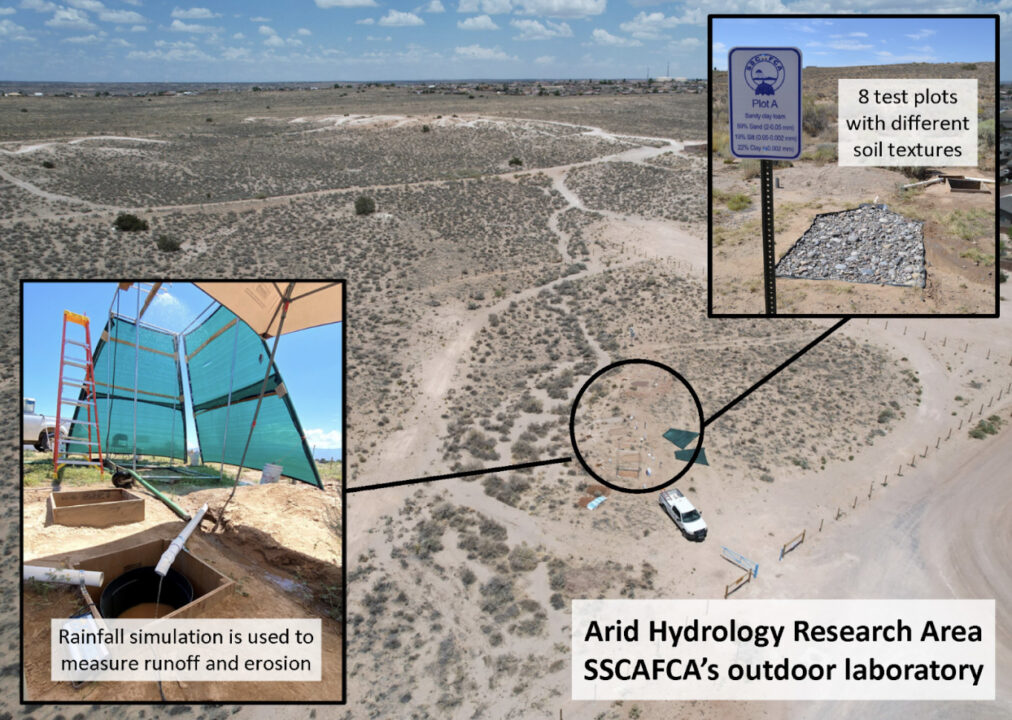
ARID HYDROLOGY RESEARCH AREA (AHRA) • GERHARD SCHOENER, SSCAFCA
Understanding infiltration and runoff dynamics is crucial for water resources management. In dryland watersheds, infiltration is a complex process influenced by a multitude of factors from soil texture to plant cover. At the Arid Hydrology Research Area (AHRA), an outdoor laboratory established by SSCAFCA in 2022, we test the impact of different soil and cover conditions on runoff, infiltration, and soil erosion under controlled conditions. Tests are carried out using a rainfall simulator designed to mimic precipitation during intense summer thunderstorms. During the field trip, we will demonstrate the experimental setup, instrumentation, and run a simulator test. Participants will get a chance to get their hands dirty and experience field work aimed at improving runoff prediction and informing management approaches for dryland watersheds
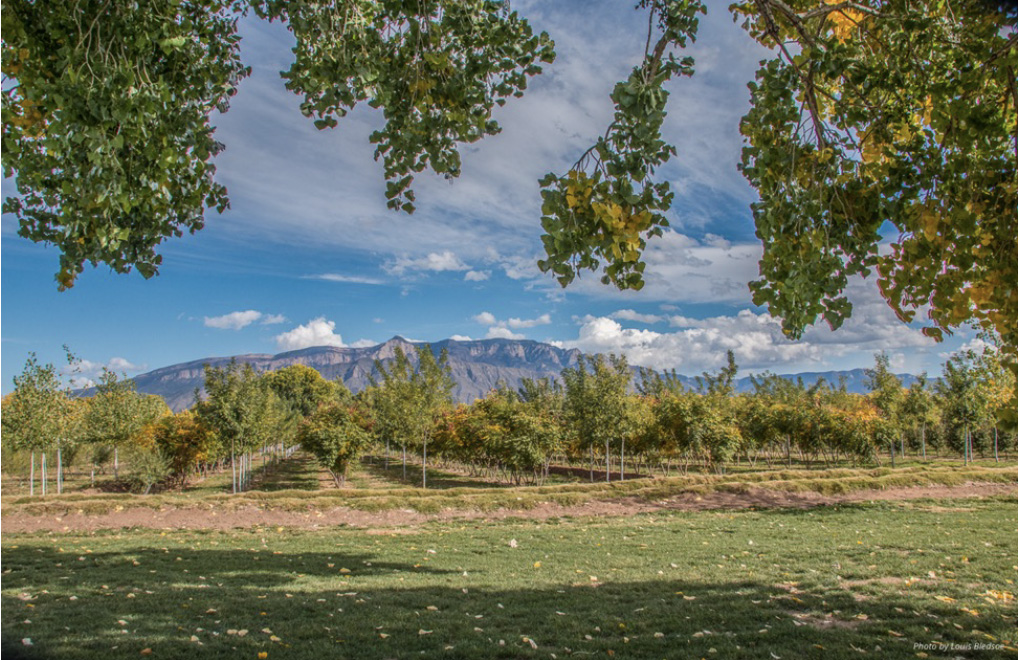
TREES OF CORRALES • ANDREW LISIGNOLI, TOC
A key component of Green Stormwater Infrastructure involves plant material. You are invited to tour Trees of Corrales where some of these plants are grown. We will discuss how these plants are produced and visit some of the trial trees grown to meet a changing climate. How do we meet the current and future demand for resilient plant material in the marketplace? Your input, questions and participation are needed to meet this challenge.
For nearly 50 years Trees of Corrales has grown trees, shrubs, grasses and perennials for the Intermountain high desert communities. Trees of Corrales sells exclusively to retail nurseries and landscape distribution centers.
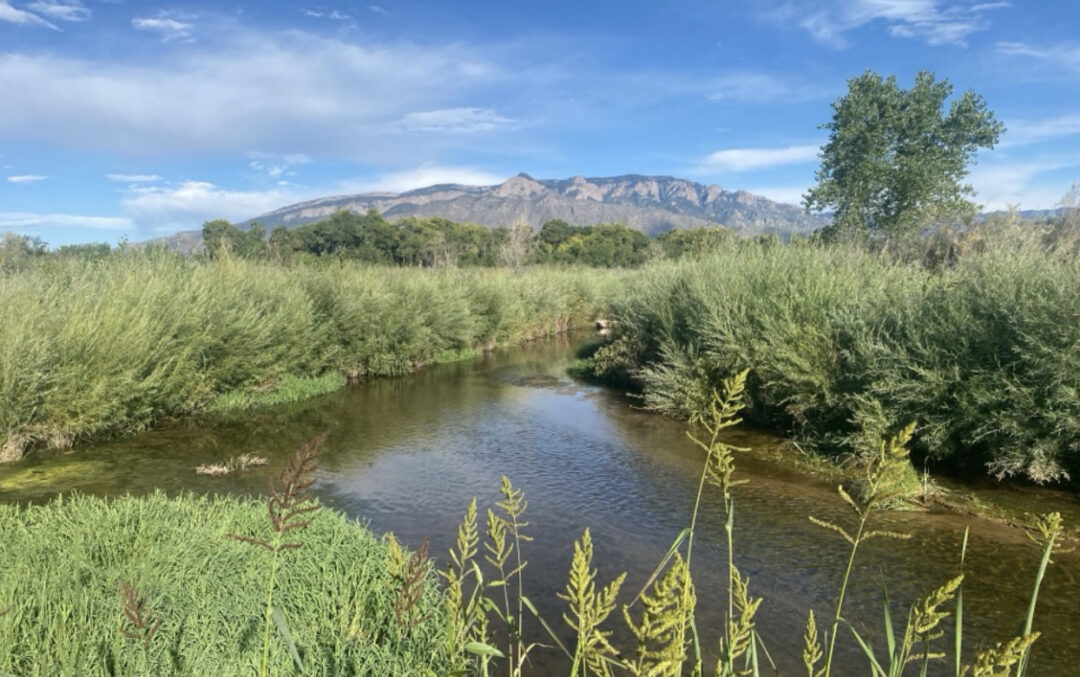
HARVEY JONES CHANNEL RIVER OUTFALL • DAVE GATTERMAN, SSCAFCA; SARAH HURTEAU, IBIS
Roughly 10 acres of riparian habitat were restored. Goals were to reconnect bosque vegetation to groundwater, lowering the bench elevation; improve water quality to reduce stormwater pollution entering the Rio Grande; enhance bird, fish, and other wildlife habitat; reduce stagnant water and mosquito issues; illustrate the benefits of large-scale green stormwater infrastructure; and, demonstrate inter-agency coordination on a public-private partnership project.

